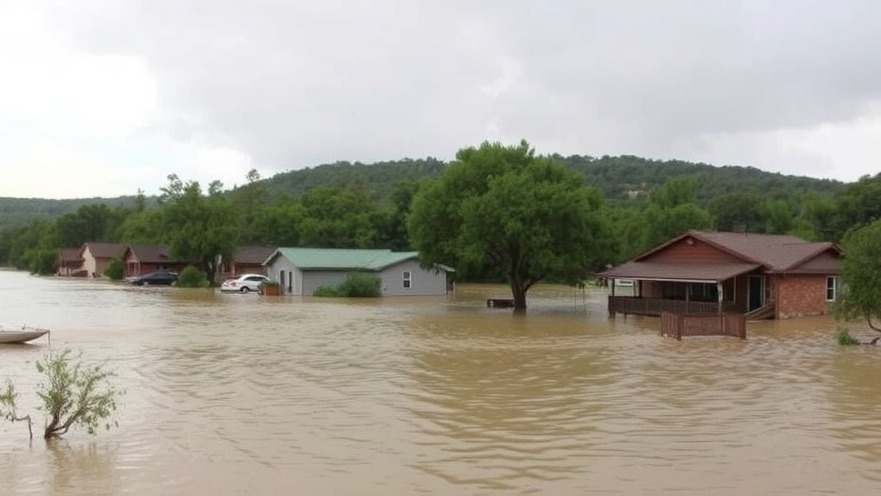
Catastrophic Flooding Strikes Texas Hill Country: A Wake-Up Call
The recent catastrophic flooding in Texas Hill Country has highlighted significant vulnerabilities within emergency response systems and has raised vital questions about preparedness and community safety. As record rainfall overwhelmed waterways, resulting in 32 deaths and many still missing, the region faced a powerful reminder of its susceptibility to natural disasters.
Understanding the Downpour: A Timeline of Events
On July 4, 2025, a forecast issued just hours prior warned of heavy rains across South Central Texas, but residents underestimated the extent of the threat. By early morning, residents awoke to find up to 12 inches of rain had fallen, causing the Guadalupe River to rise dramatically. The National Weather Service issued a series of warnings, including a flash flood emergency at 4:03 a.m., but many argue that these alerts did not reach those who needed them most.
The Crucial Role of Emergency Alerts
The failure to evacuate camps and alert the population has called the effectiveness of the emergency management system into question. Despite warnings being sent through Wireless Emergency Alerts, the local response was criticized for being insufficient. As noted by meteorologist Bob Fogarty, authorities should have amplified these alerts to ensure they reached the targeted audience. It's alarming how technological systems designed to keep residents safe were not utilized effectively in this dire situation.
What Officials Are Saying: A Mixed Response
Texas Division of Emergency Management Chief Nim Kidd noted that weather forecasts leading up to the deluge did not predict the volume of rainfall accurately. Local officials echoed this sentiment, emphasizing that expectations were based on perceived data, leading to fatal miscalculations. However, some critics argue that there was enough indication of a brewing emergency to warrant preemptive actions to avert loss of life.
Lessons Learned: Preparing for Future Disasters
This tragedy opens up a broader discussion about the importance of disaster preparedness. Experts recommend local governments implement more robust emergency management strategies, including proactive communication and community alerts about the risks of flash flooding based on predictive models. Engaging communities in discussions about what to do during an emergency can also save lives.
Counterarguments: Are We Doing Enough?
Despite advancements in technology and forecasting, there is a significant gap in public understanding of flood risks. Many Texans might not realize how rapidly conditions can change in their region. Even as emergency services point to a failure in predicting rainfall, the onus remains on community leaders to amplify these messages and ensure the safety protocols provide a sense of urgency.
The Human Cost: Impact on the Community
A camp filled with young girls, many attending a summer activity, has brought attention to the human tragedy behind the statistics. The community's grief over those missing and lost underscores the necessity for a comprehensive review of safety measures and emergency protocols. As families wait for news, the emotional scars left by this event will linger long after the waters recede.
Next Steps: Advocating for Change
To prevent future catastrophes, residents need to urge local officials to invest in improved flood response systems and communicate risks effectively. Awareness campaigns that educate communities about the dangers of flooding and the importance of heeding warnings could empower residents to take action in times of crisis.
Conclusion: The Road Ahead
This tragedy amid the picturesque landscape of Texas Hill Country should be a pivotal moment for emergency management practices across the state. By learning from this disaster, Texas can enhance its preparedness for future events. The conversation surrounding flood warnings and community response must expand to include the voices of those who are most affected. By advocating for systematic changes, Texans can hope to make their communities safer and more resilient against the forces of nature.
 Add Element
Add Element  Add Row
Add Row 



 Add Row
Add Row  Add
Add 


Write A Comment